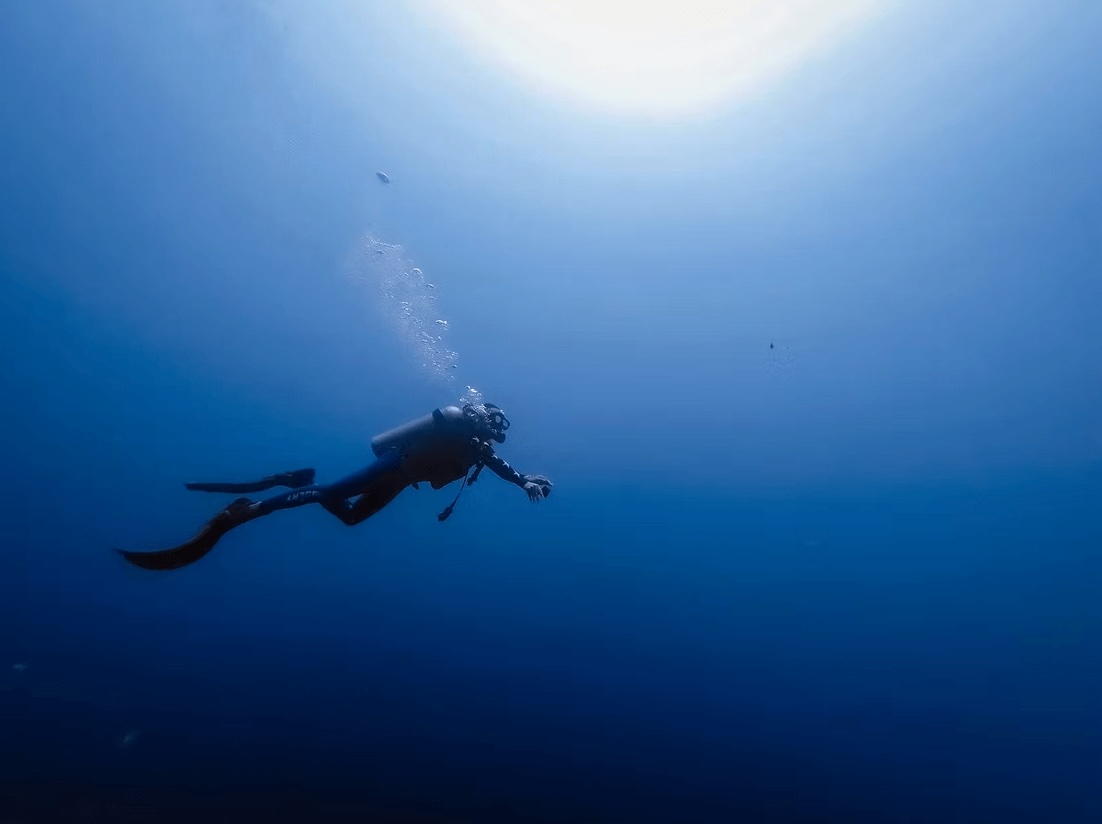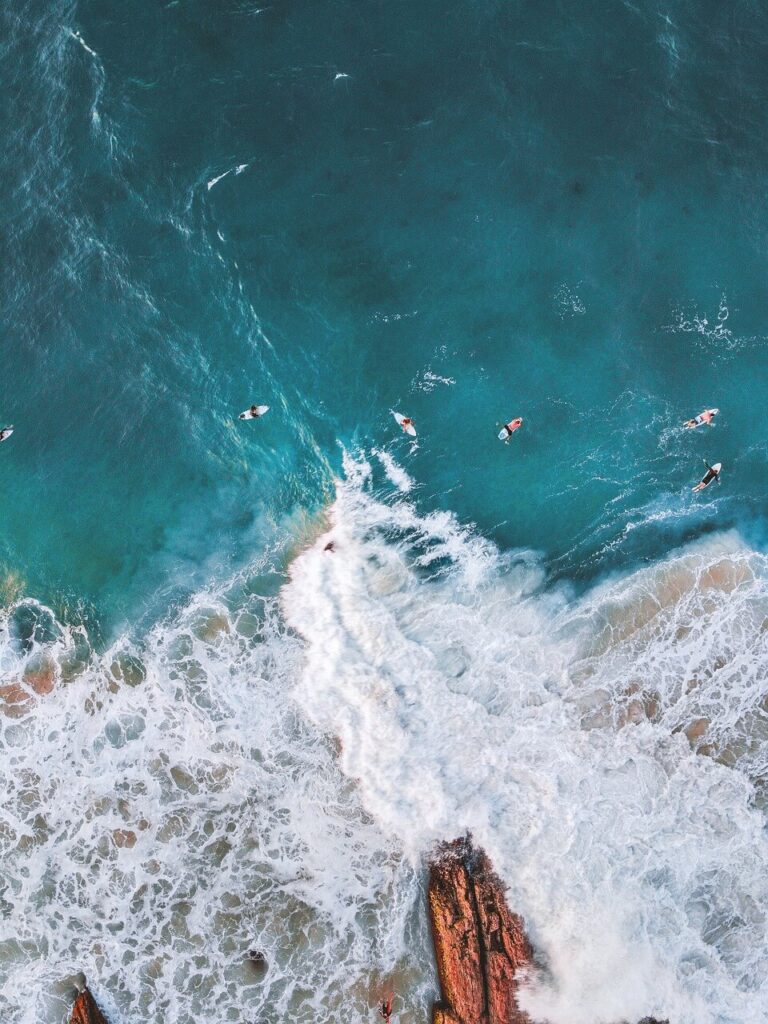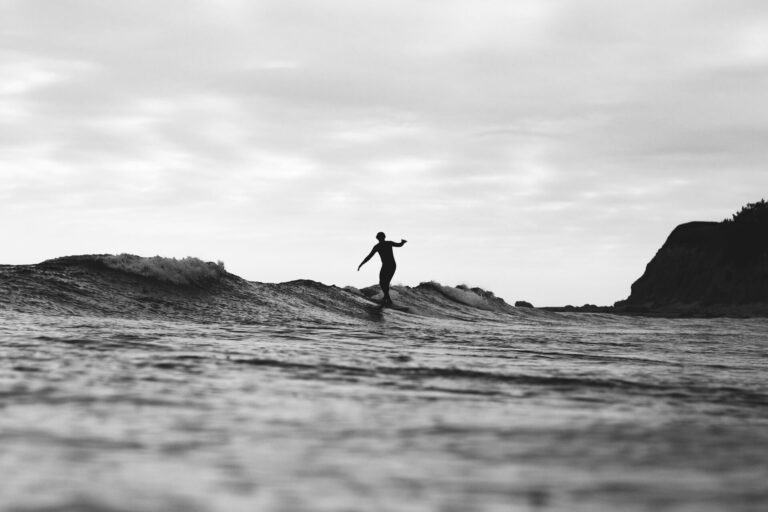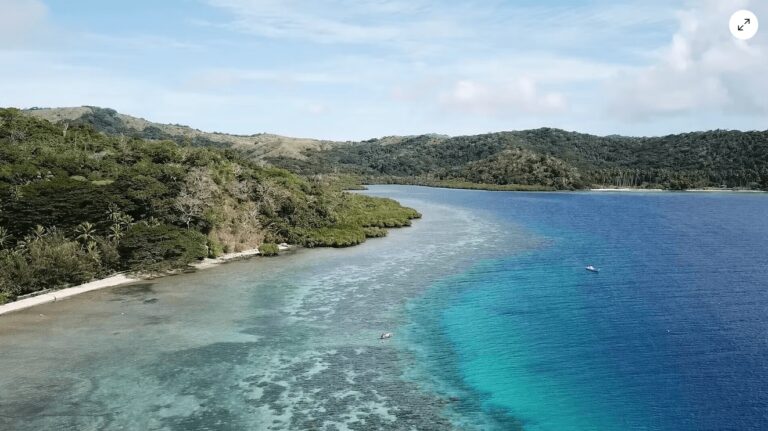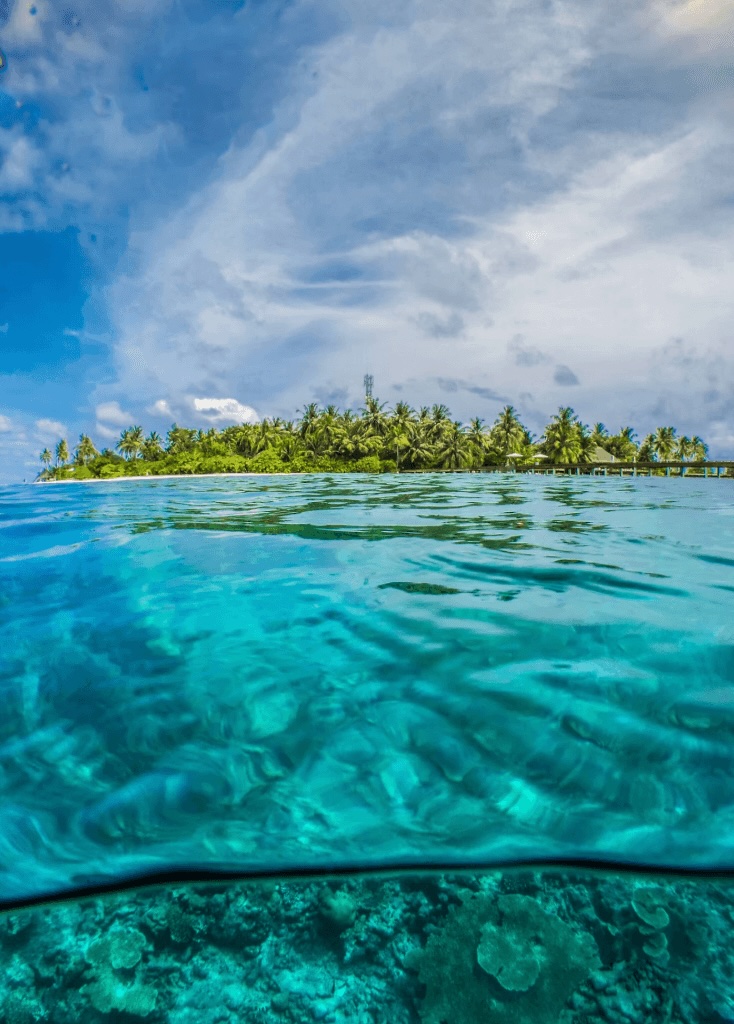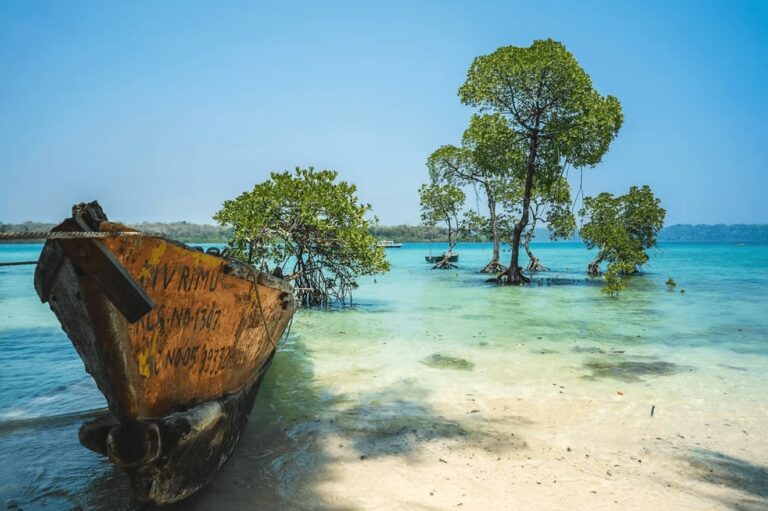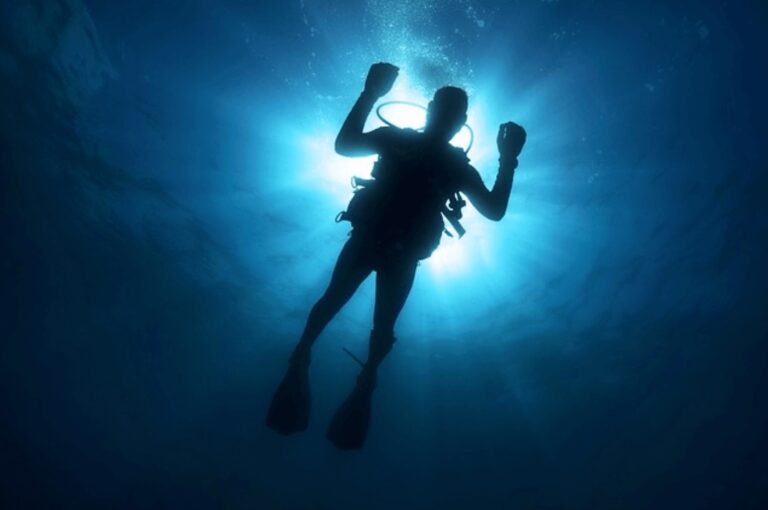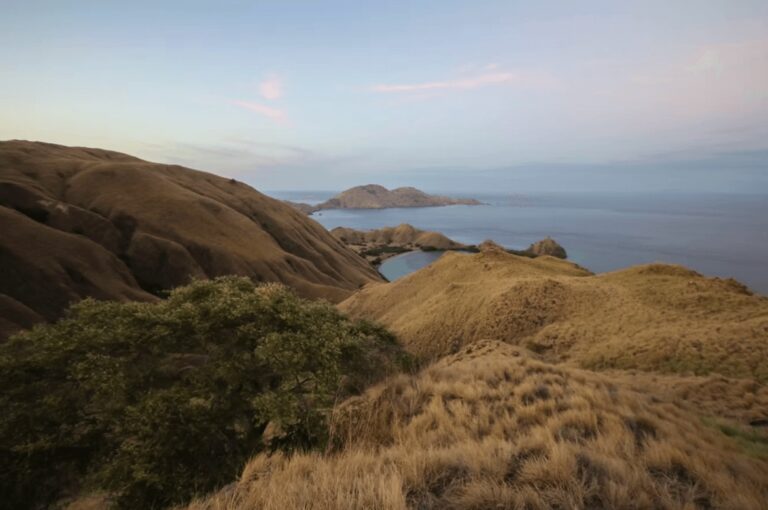Scuba diving Tubbataha Reefs Natural Park in the Philippines
Planning a dive vacation to Tubbataha Reefs Natural Park? Discover everything you need to know about scuba diving Tubbataha Reefs, including how to get there by liveaboard and the best time to visit.
Located in the middle of the Sulu Sea, Tubbataha Reefs Natural Park is a protected marine and bird sanctuary. It’s considered one of the best dive destinations not only in the Philippines but also Southeast Asia due to its unspoiled state.
Tubbataha Reefs Natural Park comprises two massive atolls, the North Atoll and South Atoll, as well as the smaller Jessie Beazley Reef. In total, it spans a total area of over 97,000 hectares.
Tubbataha is renowned for its incredible biodiversity. Think coral gardens, steep underwater walls and an abundance of large marine animals.
It’s only accessible by liveaboard due to its remote setting. But ask most divers who have ventured here and they’ll tell you it’s well worth the journey!
Scuba diving in Tubbataha Reefs Natural Park means discovering pristine reefs, dramatic underwater cliffs and a wealth of marine life, as it serves as an important fish spawning and breeding ground.
You’re likely to encounter everything from sea turtles and manta rays to a diverse array of shark species, all of which thrive in the nutrient-rich waters.
Since 1993, Tubbataha Reefs Natural Park has been designated as a UNESCO World Heritage Site, recognised for its exceptional ecological significance.
The park’s remote location, combined with the challenging access and limited diving season (March to June), have helped preserve this reef system as one of the healthiest and least exploited in the world.
In this article, discover everything you need to know about scuba diving Tubbataha Reefs Natural Park. We’ll highlight what you can see, the best time to visit and which liveaboards access the area on multi-day trips.
Planning a dive trip to the Philippines? Discover some of the best eco-dive resorts for a sustainable stay.
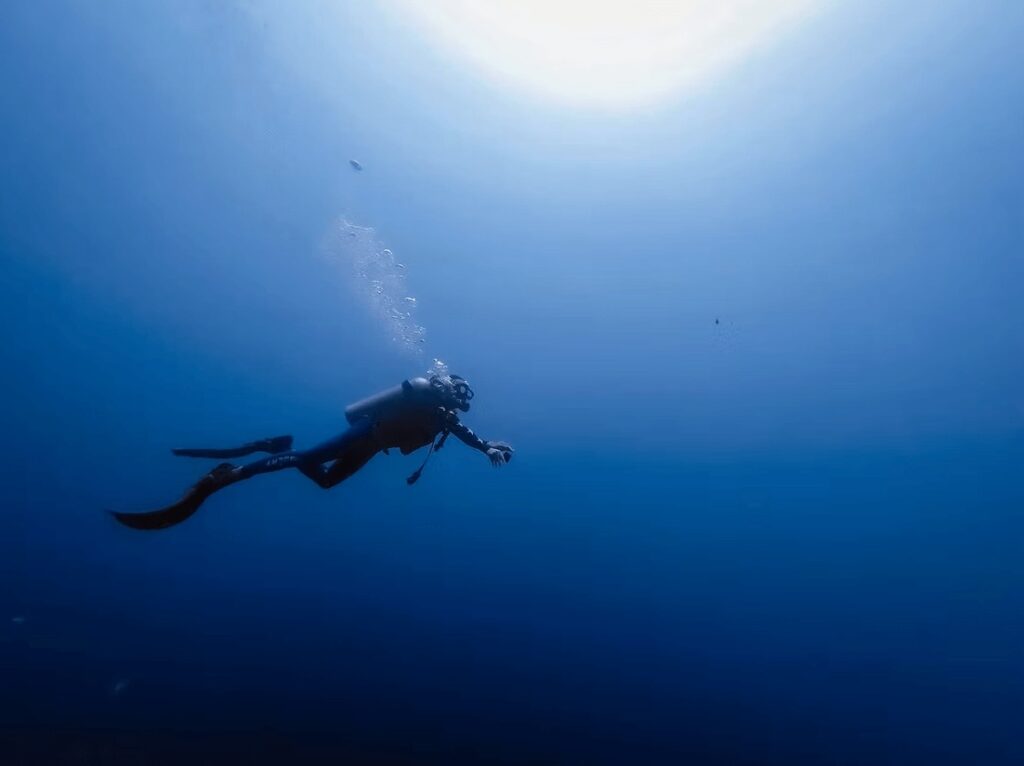
This article contains affiliate links, which means when you make a purchase through that link, we earn a small commission. Affiliate links come at no cost to you and ensure our content remains free!
Liveaboards depart for Tubbataha Reefs Natural Park from Puerto Princesa on the island of Palawan. If you’re looking for an eco-friendly hotel in Puerto Princesa to stay in before or after your liveaboard trip, we recommend the Daluyon Beach & Mountain Resort.

Tubbataha Reefs Natural Park – a UNESCO and Ramsar-listed natural wonder
In 1993, UNESCO declared Tubbataha Reefs a World Heritage Site. It was cited as a unique example of an atoll reef with an exceptionally high density and diversity of marine species.
Aside from its underwater life, the North Islet serves as an important nesting ground for seabirds and marine turtles. This underscores the site’s importance as a sanctuary for threatened and vulnerable wildlife.
In 1999, the Ramsar Convention on Wetlands designated Tubbataha as a Wetland of International Importance. This further cemented its status as a globally significant natural wonder.
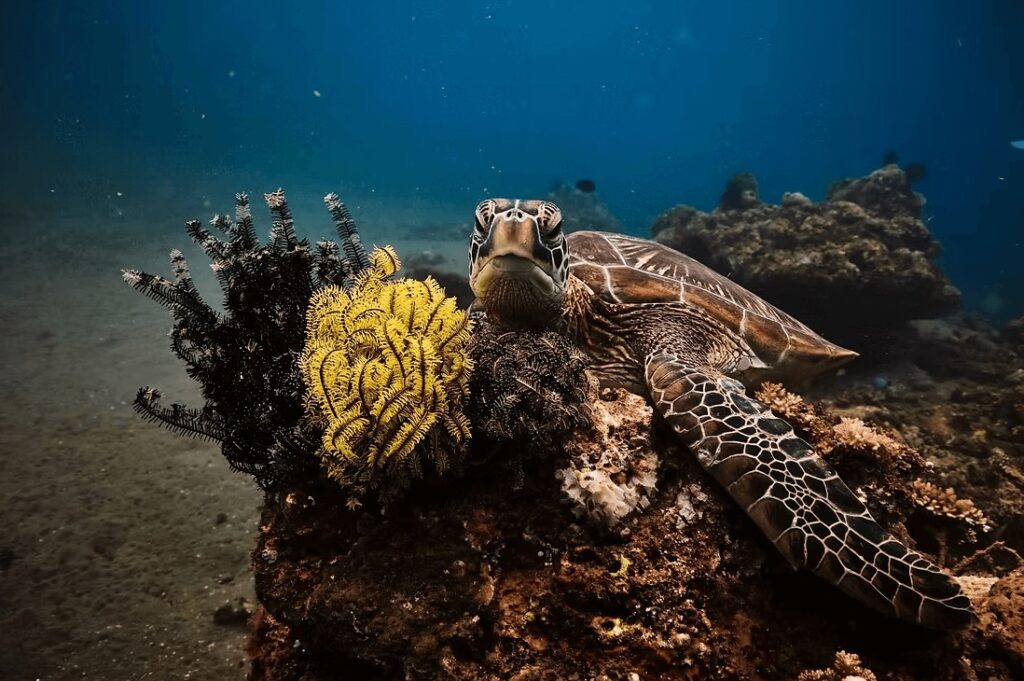
What can you see diving in Tubbataha Reefs Natural Park?
Located within the Coral Triangle, this expansive network of reefs, atolls and islets is home to no fewer than 600 species of fish and over 360 species of coral. Together with 11 species of shark, it also provides a habitat for dolphins, hawksbill and green sea turtles.
The northern side of the North Atoll, with its dramatic drop-offs and swift currents, is a prime spot for shark encounters. Meanwhile, the southern side is a hotspot for spotting schools of tuna and barracuda.
The South Atoll is renowned for its sightings of hammerheads while several fascinating wrecks dot the marine park. They provide a haven for an incredible array of macro life, from delicate pygmy seahorses to colourful nudibranchs and ghost pipefish.
The strong currents that sweep through this region also support the growth of massive, branching hard corals. These, in turn, provide shelter and sustenance for countless other marine organisms.
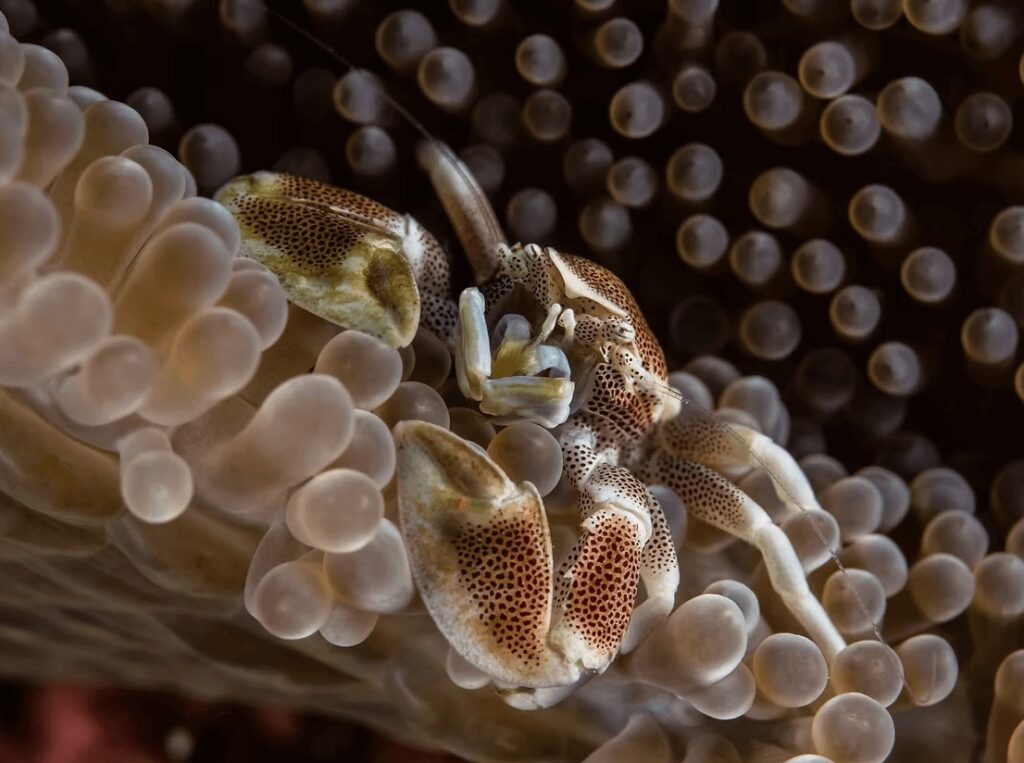
Best dive sites in Tubbataha Reefs Natural Park
Black Rock
In the northeast corner of the South Atoll, this dive site features a gently sloping plateau that extends to 25 metres in depth. It’s a reliable spot for seeing whitetip sharks hunting for bluefin trevally, as well as titan triggerfish.
Amos Rock
Located in the North Atoll, this beautiful dive site is notable for its healthy corals and huge Gorgonian sea fans. By day, you can spot groupers, mackerel and Napoleon wrasses. On night dives, it reveals a fascinating array of macro life.
Washing Machine
Famed for its strong currents (which can change direction mid-dive), this site in the North Atoll is the place to head to spot grey reef sharks. A huge diversity of tropical reef fish can also be seen, together with the occasional manta ray.
Wall Street
This magnificent wall dive features a sheer face that plunges into the depths of the Sulu Sea. It’s covered in soft corals and sea fans that provide a habitat for tropical fish while white tip and grey reef sharks patrol the blue. Whale sharks have also been spotted here!
Malayan Wall
Named after a small wreck located at the start of the dive site is this plunging wall. It’s renowned for its sightings of hammerhead sharks. After following these elusive creatures in the deep blue, the dive ends on a coral reef inhabited by moray eels, red snapper and grouper.
Seafan Alley
As its name suggests, this North Atoll dive site is home to an abundance of Gorgonian sea fans, making it a great spot for finding pygmy seahorses. Seafan Alley is definitely one of the best places for scuba diving Tubbataha Reefs Natural Park.
Delsan Wreck
At the southeastern edge of the South Atoll is this small shipwreck, which offers reliable sightings of big pelagics. Grey reef sharks can often be seen hunting in the currents and tiger sharks have also been spotted here.
Shark Airport
At this aptly named dive site, you’ll find a wide plateau that descends from around 15 metres to a shelf at 25 metres. It’s a great spot for seeing sharks swimming and resting, although the strong currents make it more suitable for advanced divers.
Night dives often reveal giant star pufferfish and moray eels.
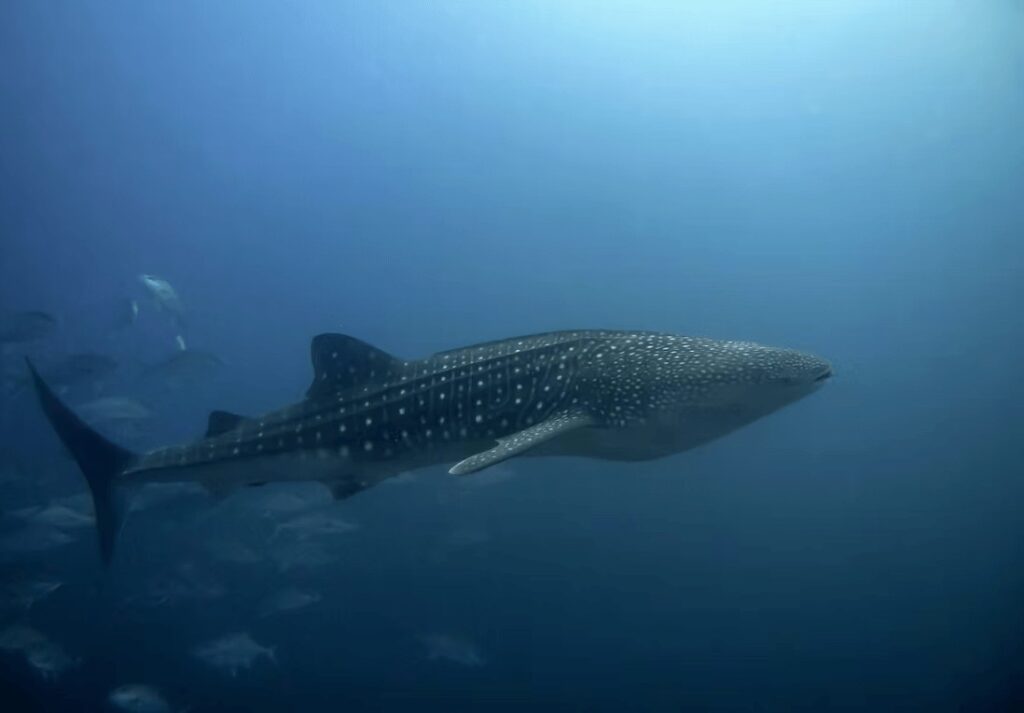
Best liveaboards for diving Tubbataha Reefs Natural Park
Numerous liveboards access Tubbataha Reefs Natural Park from Puerto Princesa and visit the three main dive areas – the North Atoll, South Atoll and Jessie Beazley Reef.
It’s important to be aware that trips often sell out well in advance, particularly during the Easter and “Golden Week” holidays. So it’s best to book your spot early.
Infiniti
Custom-designed for divers, this 39-metre steel-hulled vessel offers 7-day/6-night trips to Tubbataha Reefs with a touch of luxury. It features 11 onboard cabins, a sundeck with hammocks and loungers, and a purpose-built camera room.
Discovery Palawan
Originally constructed in Denmark in 1973, this reliable vessel served as a navigation training ship before being refitted as a liveaboard cruise vessel. After a 1.5-million-USD renovation, she can accommodate up to 40 divers on affordable 7-day/6-night trips to Tubbataha Reefs Natural Park.
Seadoors
With space to accommodate up to 16 divers, this luxury liveaboard operates 7-day/6-night trips to Tubbataha Reefs. It boasts a highly organised dive deck with Nitrox and rebreather capabilities, plus a well-stocked marine library for species identification.
Philippines Aggressor
This 41-metre vessel offers 8-day/7-night itineraries to Tubbataha Reefs and 10-night transition trips between the Sulu Sea and the Visayas. There are 12 staterooms onboard, plus a spacious salon and sundeck complete with shaded seating and sun loungers.
Prefer a land-based scuba vacation in Southeast Asia? Check out some of the region’s best eco-dive resorts here.
FAQs about diving in Tubbataha Reefs Natural Park
Is Tubbataha Reef worth it?
Tubbataha Reefs is undoubtedly one of the most spectacular and biologically diverse marine environments on the planet. Most divers who visit say it’s definitely worth the trip.
As part of the famed “Coral Triangle,” it serves as a critical refuge and breeding ground for countless species of tropical fish, sharks and sea turtles, as well as a huge diversity of corals. The pristine condition of the reef is inspiring, with towering pinnacles, dramatic walls and plateaus to explore.
Beyond the incredible biodiversity, the Tubbataha Reef also holds deep cultural significance. It has been a sacred site for generations of local fishermen.
When is the best time to dive Tubbataha Reef?
The best time to explore Tubbataha Reefs Natural Park is during the limited diving season from March through to June. During these months, the seas around Tubbataha are characteristically calm. This makes the roughly 10-hour open-water crossing from Puerto Princesa a comfortable experience for guests.
This narrow window of opportunity is highly sought-after by scuba enthusiasts from around the globe. So it’s essential to plan your trip well in advance to secure your spot. This is particularly true during major holidays like Easter and the Asian “Golden Week” celebrations when liveaboard cabins are highly sought after.
Where is Tubbataha Reefs Natural Park?
Situated in the middle of the Sulu Sea, Tubbataha Reefs Natural Park lies approximately 150 kilometres southeast of Puerto Princesa, the capital of Palawan province. The journey to get there is an open-water crossing that takes roughly 10 hours, depending on conditions.
This uninhabited marine sanctuary spans a total area of 97,030 hectares (or nearly 240,000 acres) and has been designated as a UNESCO World Heritage Site.
At the centre of the marine park lie two atolls, ring-shaped coral reefs that rise from the deep blue waters of the Sulu Sea. Just 20 kilometres to the north sits the smaller Jessie Beazley Reef. It is only half a kilometre in diameter but offers some truly impressive diving.
How long does it take to reach Tubbataha Reefs Natural Park?
Reaching Tubbataha Reef begins with a one-hour flight from Manila’s Ninoy Aquino International Airport (MNL) to the city of Puerto Princesa, the launching point for liveaboard vessels accessing the marine park.
The open-water crossing from Puerto Princesa to the Tubbataha Reef takes at least 10 hours. This allows ample time for rest and relaxation before the diving adventures begin.

PLAN YOUR TRIP WITH OUR FAVOURITE RESOURCES:
Find hotels and resorts via Booking or Agoda
Book tours and experiences via Viator or GetYourGuide
Find a rental car via Discover Cars
Book flights via Kiwi or Booking
Search for buses and trains via 12Go or Omio
Get travel insurance via SafetyWing
Buy a digital eSIM with Airalo
By purchasing through our links, you’ll be supporting our website at no additional cost to you
About the authors
We are a team of passionate divers and surfers with decades of combined experience in the water and travelling to all corners of the globe. After years of chasing waves and descending into the deep blue, we’ve created this resource to highlight sustainably run surf camps, eco-friendly dive resorts and conservation-focused ocean trips to help inspire your next adventure.
Eco Ocean Escapes was born out of a love of the ocean, an obsession with travel and a concern about the impacts of our adventures on the environments we explore. Despite the benefits that surf and dive tourism can bring to local communities, we recognised that ocean-based adventures are not always managed in a sustainable manner.
Through our articles, we hope to inspire those seeking a responsible surf or dive trip that is all about supporting local communities, preserving our coastal environments and the incredible marine species that inhabit our oceans.
-
Sustainable Surf Tourism and Respecting Local Communities
Surf tourism has exploded over the last two decades. With travel becoming more accessible and social media exposing hidden spots, once-remote breaks in Indonesia, Central America, Morocco and the Pacific Islands are now iconic stops on global surf circuits. While surf travel brings income, jobs and global attention to coastal towns, it can also disrupt…
-
Inspiring Citizen Science Projects for Surfers + How to Get Involved
As surfers, we are intimately connected to the ocean – its rhythms, its wildlife and its health. Because of this relationship, many of us are looking for meaningful ways to protect the marine environments we love. One of the simplest and most impactful ways we can do this is by joining citizen science projects. These…
-
Understanding Marine Protected Areas (MPAs): Why divers should care
If you’ve spent time underwater (as a diver or snorkeller), you’ve probably noticed something: not all sites are beacons of health. Some reefs appear vibrant and full of life, while others show signs of stress – broken coral, few fish or algae-covered rocks. One of the biggest factors shaping the health of our oceans is…
-
Costa Rica: Best Marine Parks for Scuba Divers + Eco Dive Resorts
Costa Rica is a paradise for eco-conscious travellers and underwater explorers are no exception. With its healthy coral reefs, pelagic-rich waters and some of the most progressive environmental policies in the world, the country is a dream destination for those who want to dive responsibly. We’ve been lucky enough to visit Costa Rica several times…
-
Eco-Diving: Best Destinations for Sustainable Scuba Travel
As humans inspired by the underwater world, there is plenty of incentive to protect our coral reefs. Here at EcoOceanEscapes, we want to do our bit to save endangered marine species and keep our oceans free of trash. One impactful action we can all take is to choose sustainable diving destinations. These are nations (or…
-
Eco-Friendly Diving: How to Be a Sustainable Scuba Advocate
Understand the environmental impacts of diving and sustainable scuba practices in this comprehensive guide to eco-friendly diving. Any diver will tell you that being underwater is an incredible experience. It’s a world that not everyone has the opportunity to explore and the encounters we have with marine creatures can be life-changing. Watching manta rays soar…

We are a team of passionate divers and surfers with decades of combined experience in the water and travelling to all corners of the globe.
After years of chasing waves and descending into the deep blue, we’ve created this resource to highlight sustainable surf camps, eco-dive resorts and conservation-focused ocean trips to help inspire your next adventure.
Eco Ocean Escapes was born out of a love of the ocean, an obsession with travel and a concern about the impacts of our adventures on the environments we explore.
